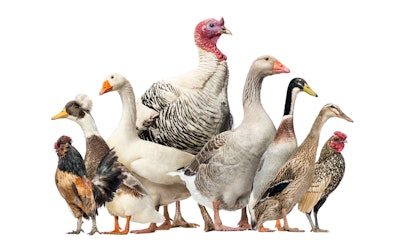
Highly pathogenic avian influenza (HPAI) was the hot topic of discussion at the United Egg Producers (UEP) Committee Briefings and Board Meeting on January 29, 2024, in Atlanta, Georgia.
The U.S. poultry industry lost a record number of birds to the HPAI outbreaks in commercial poultry operations in 2014-2015. Poultry producers ramped up structural and operational biosecurity for their operations in response and procedures for rapid response to outbreaks were fine tuned so that affected flocks can be euthanized and deposed of in a manner that is quick and safe. Despite these efforts, the HPAI outbreaks in the U.S. and Europe in 2022-2023 resulted in even greater bird losses. Stamping out efforts and heightened biosecurity are not eliminating outbreaks in commercial poultry.
With HPAI infecting and being carried by a staggering number of resident and migratory wild bird species throughout the globe, the virus can likely be found just outside the fence or door of poultry houses world-wide. These facts led a poultry industry veterinarian at the UEP meeting to ask the logical question, “Why is HPAI still considered a foreign animal disease (FAD)?”
Chapter 1.2.1 of the WOAH code explains the criteria for the inclusion of diseases, infections and infestations in the WOAH list. The criteria states that for inclusion on list, “At least one country has demonstrated freedom or impending freedom from the disease, infection or infestation in populations of susceptible animals, based on the provisions of Chapter 1.4.”
Section 1.4 explains: “Wildlife may be included in a surveillance system because they can serve as reservoirs of infection or infestation and as indicators of risk to humans and domestic animals. However, the presence of an infection or infestation in wildlife does not mean it is necessarily present in domestic animals in the same country or zone, or vice versa. Surveillance in wildlife presents challenges that may differ significantly from those in surveillance in domestic animals.”
Since wild birds have been infected by variations of this strain of HPAI for two decades and the virus is found globally, why is still considered an FAD?
Trade concerns have a chilling affect on discussions of HPAI vaccination in poultry exporting countries. Hopefully this changes soon. The World Organization for Animal Health (WOAH) has released a policy brief explaining why avian influenza vaccination should not be a barrier to safe trade.
Vaccination probably won’t be a silver bullet solution for the HPAI pandemic. But research and experimentation with vaccination and differentiating infected from vaccinated animal (DIVA) strategies shouldn’t be held hostage because of trade concerns. Robust international trade of poultry products and genetics is crucial for the future health of the poultry industry and for human health and nutrition. The poultry industry needs to confront the real possibility that HPAI will continue circulating in wild birds indefinitely and that biosecurity alone won’t keep the virus out of commercial operations. This means supporting research for vaccine development, vaccination programs and DIVA strategies without letting trade issues squelch progress.


















